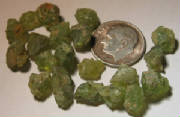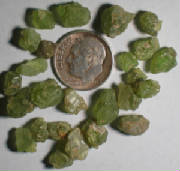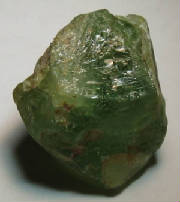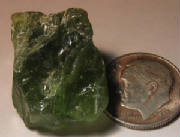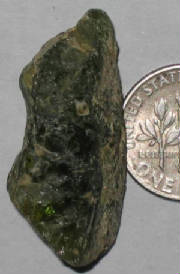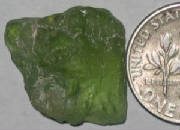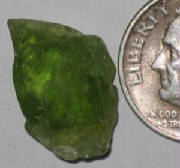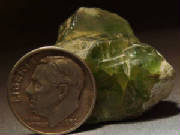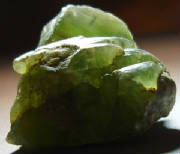Peridot is the best known gem variety of olivine, a species name for a series of magnesium-iron rich silicate
minerals. This bright yellow-green to green gemstone has caught the fancy of humans for thousands of years. Some historians
even suspect that at least some of the "emeralds" worn by Cleopatra were actually peridot. Much of its recent popularity can
be explained by its currently being recognized as the birthstone for the month of August, people wear the stone because it
is supposed to bring the wearer success, peace, and good luck.
The United States was for many years the largest producer of peridot, the value of production in 1993 was
estimated to be about $1.5 million, according to the USBM. The United States is getting major Competition from China and Pakistan
for the title of world's largest producer.
The earliest recorded production of peridot was in about 70 A.D. from St. Johns Island in the Red Sea, about
54 kilometers off the coast of Egypt. Most of the earliest known peridot gems came from this location and small amounts of
material are still being produced from there today. Later, very large, fine-quality peridot was produced from deposits in
Myanmar (formerly Burma). These deposits were well known for their 20- to 40-carat cut stones of superb color and clarity,
but since the socialist government came to power, the supply of Burmese peridot has been curtailed to such a point as to no
longer be a factor in the industry. One can only guess as to whether the deposits are mined out, or if government policies
have resulted in the shortage of material
